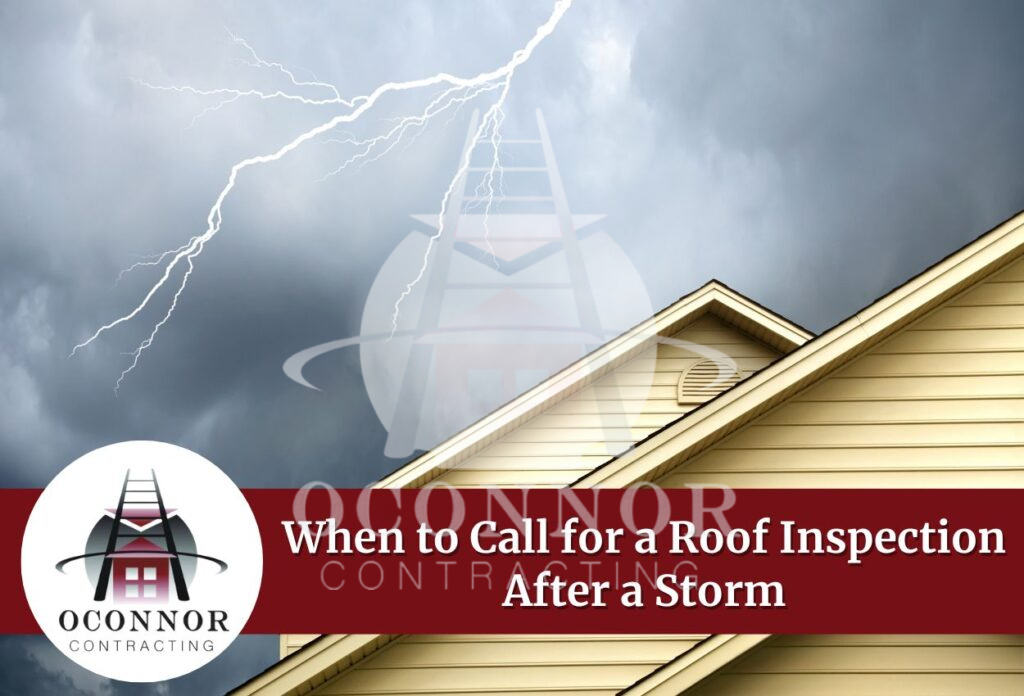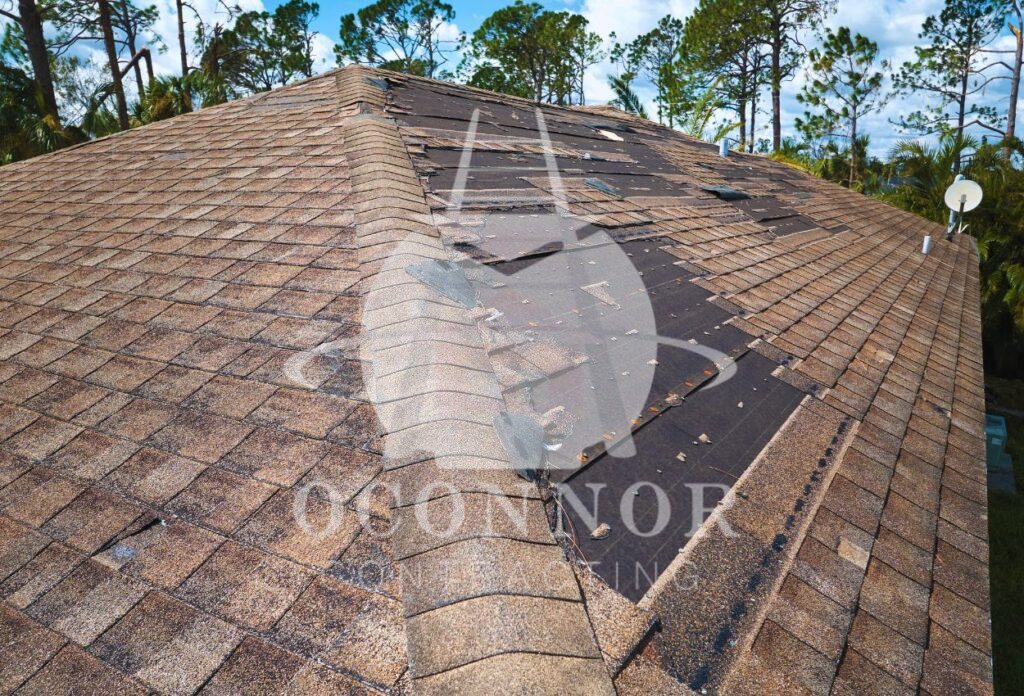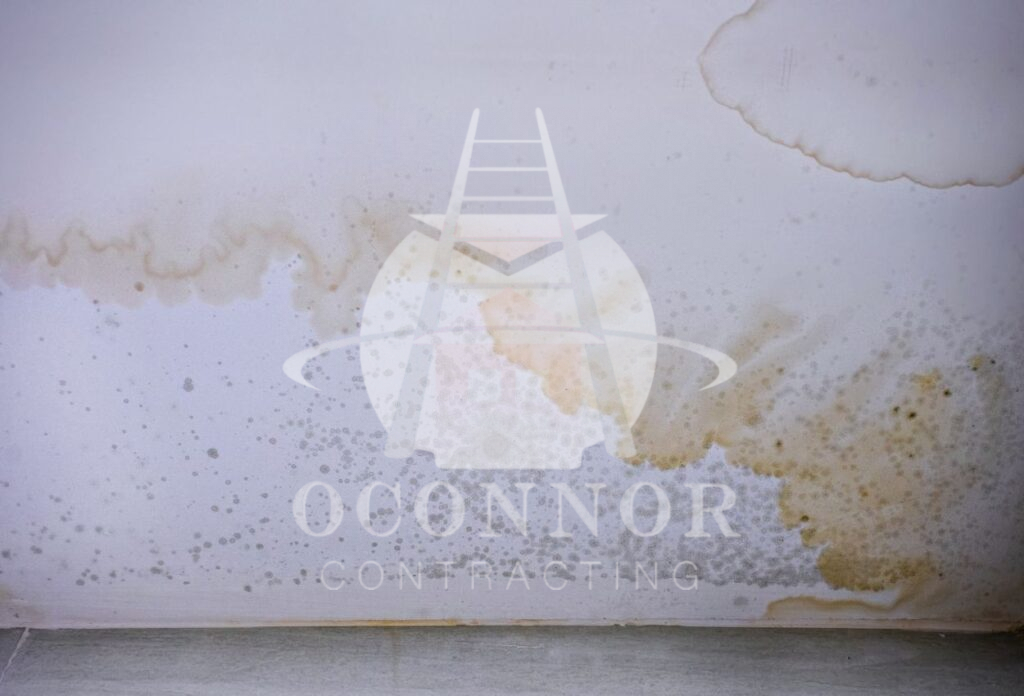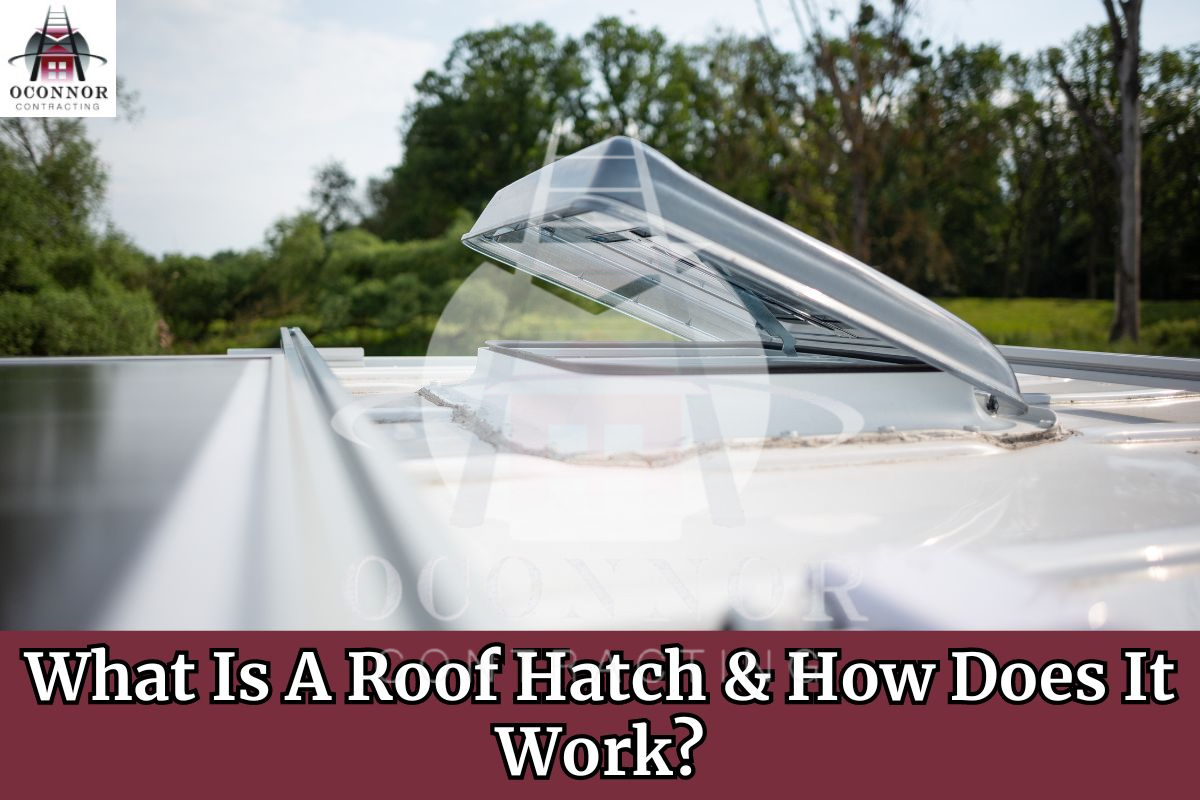
Once a night of heavy wind and rain has passed, you might step outside your home to find branches scattered, with a feeling that your roof might be damaged. Harsh storms can cause serious harm to homes, and the roof often takes the worst of it. Knowing when to call for a storm damage roof inspection is key to protecting your home and keeping your family safe.
To help you out, this blog post will walk you through the signs of storm damage, when to take a closer look, and what to expect during a professional inspection. By staying informed, you’re actively working to prevent minor issues from turning into bigger problems.
How Soon Should You Call for a Roof Inspection?
Knowing when to call for a roof inspection is essential. Here are a few examples of the right time to call:
Right After Severe Storms
After a big storm with strong winds, heavy rain, or hail, schedule an inspection. Even if you can’t see damage, a roofing expert can find hidden problems that may cause issues later.
When You See Damage
If you notice some of the signs that we mentioned above, call for an inspection right away. Delaying can lead to more damage and higher repair costs.
Annual Inspections
Even if your roof looks fine after a storm, getting it inspected every year is a smart move. Regular inspections can find minor problems before they turn into costly repairs.
Signs You Need a Roof Inspection After a Storm
Even if your roof looks fine from the ground, there may be some common, but also hidden damage, that needs a professional evaluation. Here are some signs on how to inspect a roof for hail damage:
Common Signs of Storm Damage
#1. Visible Shingle Damage

Check your roof for visible signs of roof storm damage to the shingles, such as curling, cracking, or missing pieces. These issues can weaken your roof’s ability to prevent leaks. Even one damaged shingle can lead to water infiltration, making it essential to address any visible problems quickly.
#2. Granule Loss
If you find granules from asphalt shingles in your gutters or scattered around your yard, it may indicate potential hail damage. Granule loss exposes the underlying material of the shingles, increasing their vulnerability to further deterioration and reducing their lifespan.
#3. Dents or Scratches on Roofing Features
Areas around chimneys, vents, and other protrusions are especially susceptible to storm damage. Look for dents or scratches in these spots, as they can signal impacts from debris or hail, potentially compromising their effectiveness.
#5. Warped Rafters
Rafters should be straight and free from water damage. If they appear warped, it indicates moisture has penetrated the roofing system and could compromise the structural integrity of your home. Call a professional immediately if you notice any warping or dampness in your rafters.
#6. Stains on Ceilings or Walls

Water stains on ceilings or walls are often the first visible signs of a leak caused by roof damage. If you notice discoloration, especially after a storm, it’s essential to investigate further, as these stains can indicate serious underlying issues.
#7. Loose or Damaged Ridge Caps
Ridge caps cover the peak of the roof where two slopes meet. Loose or damaged caps can allow water to seep through the seams, leading to leaks and further structural issues.
#8. Damaged Roof Vents
Roof vents allow air to circulate in the attic but can be damaged during storms. Check for cracks or disconnections in the vents. If they’re damaged, they may not work properly, leading to moisture buildup and potential mold growth in the attic.
#9. Cracked Flashing
Flashing seals joints to prevent water from entering your home. If you notice cracked or missing flashing around chimneys, vents, or skylights, it should be repaired right away to avoid leaks.
#10. Sagging Roof
A sagging roof is a serious concern that may suggest structural issues. This can result from water damage or weakened support beams due to prolonged moisture exposure. Immediate roof storm damage inspection and repair are necessary to prevent further damage.
#11. Debris Accumulation
Debris such as branches, leaves, and other materials can be blown into, and physically damage your roof. Even small debris can clog gutters, trapping water on the roof’s surface and causing leaks.
Also Read: Roof Blistering vs. Hail Damage: How to Tell the Difference
Hidden Signs of Storm Damage
Along with signs that are clearly visible, some signs are hidden, and require a professional eye in order to be able to detect them. Typically, if these forms of damage are left untouched, they will turn into more severe damage over time.
#1. Peeling Paint Near Roofline
Blistering or peeling paint along the roofline can indicate moisture buildup due to poor ventilation or roof storm damage. This issue may worsen after a storm and could lead to more severe problems if it’s not addressed.
#2. Ice Dam Formation
In winter, ice dams form due to poor insulation or ventilation in the attic caused by storm damage. This can lead to significant water pooling on the roof and leaks into the home.
#3. Mold Growth in Hidden Areas
Mold may develop in concealed spaces, such as behind walls or under insulation, due to undetected leaks. If you notice musty odors or have unexplained health issues in your home, it may be time for a roof storm damage inspection for hidden mold growth related to roof damage.
#4. Soft Spots on the Roof Deck
Walking on your roof may reveal soft spots, indicating underlying water damage. These weak areas can give way under pressure, creating a safety risk and indicating serious structural concerns.
#5. Increased Energy Bills
A sudden spike in energy costs may suggest that your roof is allowing air leaks due to hidden roof storm damage. Poor insulation caused by moisture intrusion can lead to increased heating and cooling costs.
The Importance of Timely Post-Storm Roof Inspections
To keep your roof in the best shape possible, proper roof storm damage inspections are extremely essential and should be made as soon as possible. Some reasons why inspections should be scheduled ASAP include:
1. Prevent Bigger Problems
Addressing small issues quickly helps prevent them from escalating. For instance, a tiny leak can lead to serious water damage if it’s left unchecked.
2. Save Money
Waiting too long for a roof storm damage inspection can lead to higher repair costs. Quick checks not only catch issues early, but also assist with insurance claims, ensuring you get the funds you need.
3. Keep Everyone Safe
Post-storm inspections are vital for safety. A damaged roof can pose risks like falling debris, so having a professional assess it is crucial.
4. Help with Insurance Claims
A timely professional inspection can simplify the insurance claims process. By documenting damage thoroughly, it helps to ensure you receive the compensation you deserve.
5. Plan for the Future
Regular inspections support long-term roof maintenance. By finding problems early, you can develop a plan to protect your roof from future storms and save money in the long run.
What Happens During a Storm Damage Roof Inspection?
During a storm damage roof inspection, a contractor starts by checking the ground for visible damage. Then, they climb onto the roof to inspect shingles for missing or curled pieces and granule loss. They also examine flashing and vents for dents and look for pooling water, which could indicate drainage problems.
Throughout the process, the contractor takes photos and prepares a written report summarizing their findings and necessary repairs. The inspection usually takes 1 to 2 hours, and at the end, homeowners receive a repair estimate, which is essential for preventing future damage and avoiding costly repairs.
Trust OConnor Contracting for Your Storm Damage Roof Inspection!
Timely roof inspections after storms are vital for your home’s integrity. By being proactive about potential damage, you protect your investment and your family’s safety. Even minor issues can quickly turn into major problems if they’re ignored for too long.
Don’t let storm damage leave you out in the cold. OConnor Contracting is your trusted partner for expert roof repair and restoration. Our experienced team offers prompt, reliable storm damage services to restore your home quickly and efficiently. Contact us today at (716) 600-7663 for an instant quote, and let us lighten your load.



